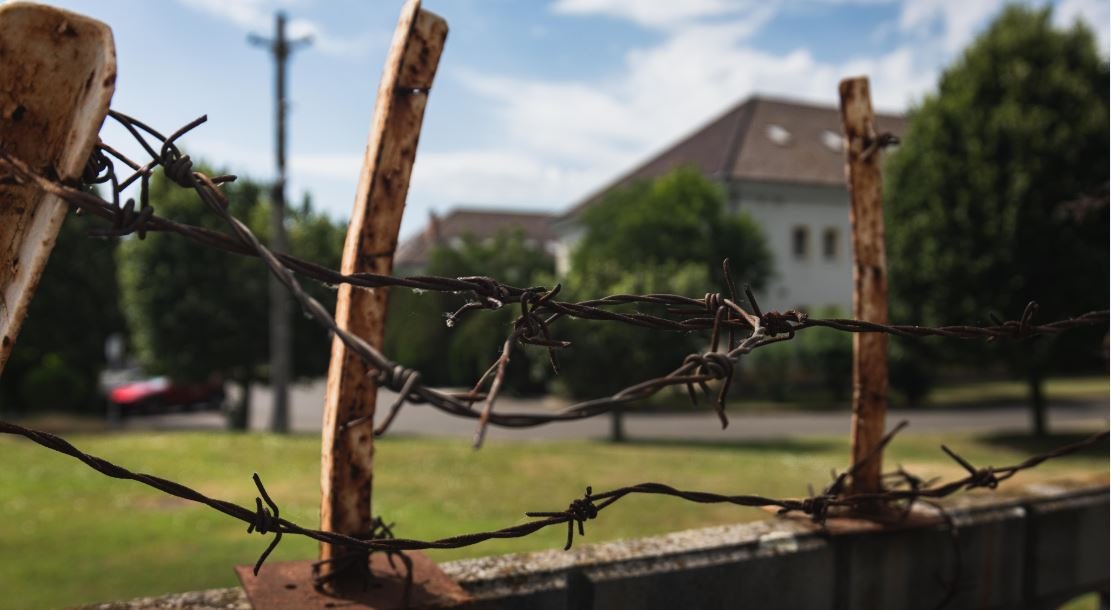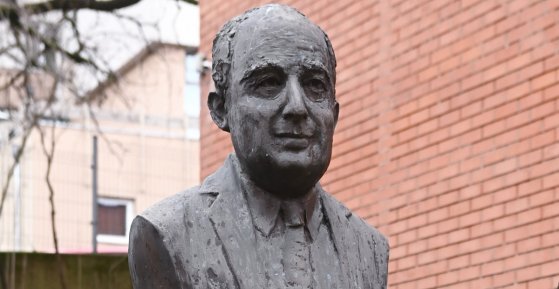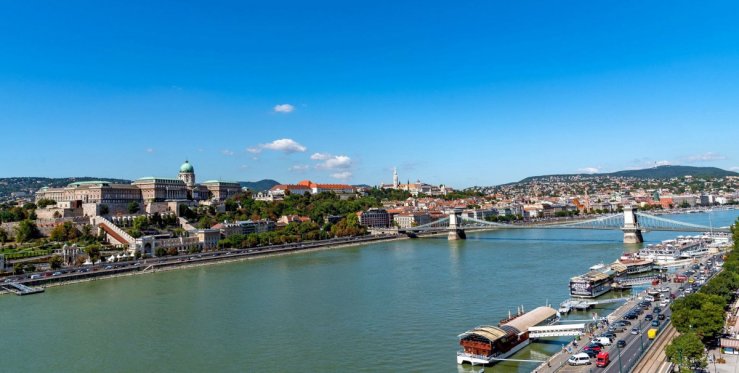The withdrawal of Soviet troops, which had been temporarily stationed in Hungary for almost fifty years, was preceded by popular expectations during the years of regime change. Many people only believed that all this was possible when, on 19 June 1991, the last Soviet soldier, Lt. Gen. Viktor Silov, left the country across the Tisza Bridge in Záhony at the then Hungarian-Soviet border.
At that time, more than a hundred thousand Soviet citizens left Hungary, including almost fifty thousand soldiers, along with family members and civilian employees. Of course, their supply was accompanied by a significant infrastructural background. According to contemporary data, at the end of 1988, the Soviet Southern Army Group maintained about 100 garrisons and used about 6,000 properties.
Simultaneously with the team withdrawals, the fate of these properties also began to preoccupy the public. It was a well-known fact that, in general, the buildings were not in the best condition, to put it mildly, and often the environment was also very badly affected by military activity and the negligence that followed.
Soviet troops withdrawing from Hungary in 1991 (Photo: Veszprémi Napló, 2 July 2016)
The 11 October 1990 issue of Népszabadság already lists the possibilities for recycling Soviet military objects, but emphasizes:
“Among many other questions, one of the most important is: when can we start with actual recovery? No one has a definite answer yet, as we don't really know what the retiring soldiers left here. Horror stories circulate about ammunition, weapons, an environment contaminated with oil and chemicals. "
An interesting suggestion also appeared in the contemporary press that the U.S. Senate would fund the costly clean-up of the areas, but it soon became clear that the necessary million-dollar amount was expected in vain in Hungary.
An inter-ministerial committee on the utilization of the former barracks was soon established, and already in 1991 a government decision was made on the necessary measures, allocating 930 million HUF for the initial works. This significant amount was practically only intended to provide a quick remedy for the environmental damage. The damage assessment, which took years, covered a total area of 46,000 hectares.
Meaningful data can be read in the article of the 30 April 1994 issue of Magyar Hírlap:
“In addition to the extraction and disposal of approximately 1.3 million litres of contaminated hydrocarbon products (kerosene, diesel, gasoline), 586,000 cubic meters of contaminated groundwater were extracted and treated. Besides, 195,000 cubic meters of contaminated soil were cleaned and 2,900 cubic meters of waste were collected and disposed of safely. ”
Between 1956 and the 1990-1991 withdrawal of the troops, the Soviet army also used Mátyásföld Airport, the area of which was also very polluted due to the activities of the Soviets.
However, eliminating environmental damage was only the first step. Utilization of the buildings required additional sums of money and, most importantly, investors who, in addition to the necessary capital, also had ideas that could put non-civilian objects at the service of civil society, in some meaningful and workable construction.
The above-mentioned article of Magyar Hírlap writes about this:
“Experience has shown that former Soviet objects are utilized in many ways. Primarily the officers' apartments proved to be for sale. By the end of last year, the Treasury Property Management Organization had handed over 1,700 of the 15,000 flats under its management to local governments free of charge, and had sold 6,800, and the rest could not be sold due to their deteriorated condition. The '56ers also moved to the former, renovated Soviet officers' homes in Mátyásföld. Several former airports and barracks are used by various companies. ”
The barracks of Halomi Road in the 18th District in an archive picture (Photo: Tomory Lajos Museum / Ágnes Tasnádiné Ferencz)
The history of the barracks of Halomi Road in the 18th district is , which was first left in Budapest by the Soviet army in early October 1990, is quite typical. There were plans to move the homeless in the capital here, as there were also a number of officer residences in the area. The idea, which, incidentally, came not from anywhere else but from the Budapest City Council, was, however, met with great protest from the people of the neighborhood who feared its peace, so it was quickly rejected.
The area of the former Beloiannisz barracks on Halomi Road nowadays (Photo: Tamás Pápai)
The property rights of the former Soviet barracks was shared by the Hungarian state and the 18th District local government, in two-thirds-one-third proportions, but until the withdrawal of Soviet troops, the buildings remained under government control. Subsequently, the Locked State Property Management Organization and Utilization Institute of the Ministry of Finance entered into a contract to provide transit accommodation for Jews emigrating from the Soviet Union to Israel for a period of time in the barracks.
However, in connection with the barracks on Halomi Road in the 18th district in the beginning of 1991 it was also seriously suggested that the Pázmány Péter Catholic University should move here, but eventually a site was found in Piliscsaba (also in the area of a former Soviet barracks). However, the church utilization was partially realized, as the Hungarian Charity Service of the Order of Malta received the barracks buildings, and the officers' flats were sold by the Treasury Trust and the local government during 1992. On the Királyhágó Street front of the area, there were sports fields during the Soviet era, a residential park was built in their place in the 2000s, while a modern residential area was created on the side of Tarkő and Kétújfalu Streets with Herrich Károly Square in the center in 2010.
In the 16th District, in Mátyásföld, the former headquarters of the Soviet Southern Army Group is also typical, where the utilization has been very successful in recent decades.
Former Soviet military sports field in the 16th District in Mátyásföld (Photo: Róbert Juharos / Pestbuda.hu)
The area bounded by Hunyadvár Street- Bökényföldi Road- Újszász Street- Diósy Lajos Street was managed by the Mátyásföld Holiday Owners' Association before the Second World War, then by the Hungarian army from 1952 and by the Soviet army from 1956. The large area of the former Soviet barracks was used very well in the decades after the change of regime, the former Soviet community centre housed the Corvin Cultural Centre and the Erzsébetliget Theater, as well as the 1956 Foundation building mentioned in the above quotation, - the residential buildings here have been renovated since 1991.
The building of the Corvin Cultural Centre and Erzsébetliget Theater in Mátyásföld (Photo: Róbert Juharos / Pestbuda.hu)
The rest of the area of the former Soviet barracks remained in local government ownership, on which developments continued even after the turn of the millennium. During these years, the swimming pool in Mátyásföld was built here, which has been called the Rátonyi Gábor Swimming Pool in Erzsébetliget since 2019. The aforementioned Corvin Cultural Centre and the Erzsébetliget Theater were also renovated and expanded together with the building of the former Soviet restaurant next to it.
Renovated former Soviet restaurant in Erzsébetliget, Mátyásföld (Photo: Róbert Juharos / Pestbuda.hu)
In the adjacent 15th District, in the area of the former Soviet barracks the Pólus Shopping Center was built near the Szentmihályi Street in the late 1990s.
Finally, there is an example from the Buda side of the utilization of former Soviet barracks. On the northern border of the city, the Gábor Dénes College, founded in 1992, established its first campus at 324 Bécsi Street of the 3rd District, and later the Institute of Psychology of the Faculty of Arts of the Károli Gáspár Reformed University also found a home here. There is now a Waldorf school on the site of the former Soviet barracks.
Former Soviet military buildings at 324 Bécsi Street in the 3rd District (Photo: Róbert Juharos / Pestbuda.hu)
Above, we visited some of the former Soviet military objects, but in addition to these, the Soviet army was present in several locations in the capital and kept capital buildings under its supervision. In particular, They had many service buildings in Mátyásföld of the 16th District, such as the residential and office building on Koronafürt Street and the guest house on Bajcsy-Zsilinszky Street, as well as the warehouse building on Keresztúri Street.
The Soviet headquarters operated in Határhalom Street in the 17th district, and the district also includes the interesting North-Pest Hospital, which we discussed earlier in a separate article. This patinated hospital was occupied and expropriated by the Red Army in 1945 and used as a central health service facility by the troops stationed here by the Soviets, who expanded it several times, most recently in 1985. But there were also Soviet buildings in the interior of Budapest, such as the a hostel for unmarried military officers in the Rottenbiller Street in the 7th District.
It is now thirty years since the Soviet soldiers left our capital ... In many cases, the buildings they had used have been reused very well, which can make us forget a little about the sad memories associated with them.
Cover Photo: The remains of barbed wire around the former Soviet barracks of Bécsi Street in the 3rd District (Photo: Róbert Juharos / Pestbuda.hu)







































Hozzászólások
Log in or register to comment!
Login Registration